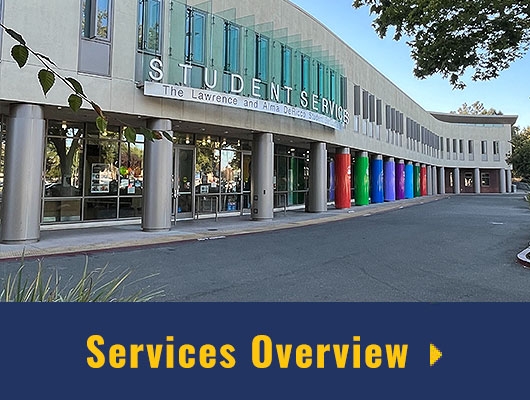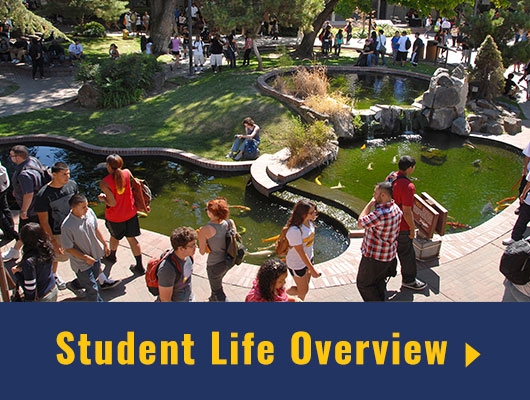A: This glossary offers definitions for terminology frequently associated with bias and bias incidents. While it aims to provide clarity, it is not comprehensive. The SAFE Team acknowledges that language is nuanced and that the meanings of these terms may evolve over time. Your understanding and engagement are important as we work toward a more inclusive environment. If you have questions or suggestions for additional terms, please feel free to share.
Assess: The SAFE Team is committed to assessing all reports received within 48 business hours.
Bias: A tendency to favor or disfavor a person, group, or thing compared to another, typically in a manner that is considered unfair. Biases can be either conscious (explicit) or unconscious (implicit) and may manifest in attitudes, behaviors, or judgments. Additionally, bias can become institutionalized when it is embedded in policies, practices, and structures, leading to systemic advantages or disadvantages for certain groups.
Bias Incident: Any hurtful, discriminatory, or harassing act directed at individuals or groups based on their perceived or actual identity (e.g., race, ethnicity, religion, gender, sexual orientation, disability). An act is considered a bias incident even if it does not qualify as a crime under federal, state, or local laws, and regardless of whether it violates District policies.
Complainant: An individual who submits a complaint alleging that a student, faculty, staff member, or community member has violated District policy related to bias. A complainant can also be any student, faculty, or staff member who believes they have been a victim or negatively impacted by the misconduct of another, regardless of whether they personally filed the complaint or someone else did on their behalf.
Creed: A set of beliefs, principles, or aims that guide an individual’s or group’s thoughts, behaviors, and actions. A creed can be personal, philosophical, or religious, and often serves as a foundational framework for decision-making and interactions.
Discrimination: Unfavorable or unfair treatment of an individual or group based on their membership in a protected class, as defined by federal and/or state statutes. Protected classes may include race, ethnicity, gender, sexual orientation, religion, age, disability, or other legally recognized categories.
Ethnicity: The shared cultural characteristics of a group of people from a specific geographic region, including their language, heritage, traditions, religion, and customs. Ethnicity often encompasses a sense of shared identity and common ancestry.
Gender: A complex social construct that encompasses identity, expression, and social elements related to masculinity, femininity, and other gendered experiences. Gender includes:
- Gender Identity: How individuals perceive and identify themselves (e.g., male, female, non-binary).
- Gender Expression: How individuals present themselves through appearance, behavior, and language.
- Social Gender: The expectations and norms society associates with gender.
- Gender Roles: The roles and behaviors considered appropriate for individuals based on their perceived gender.
- Gender Attribution: How others perceive and categorize an individual’s gender.
Harassment: Involves unwelcome conduct based on an individual’s membership in a protected class (e.g., race, gender, religion, disability, etc.) and must be sufficiently severe or pervasive such that it interferes with an employee’s ability to perform their job or denies or limits a student’s ability to participate in or benefit from the College’s programs or activities.
Implicit/unconscious bias: Occurs outside of conscious awareness and is not deliberate or intentional. Can influence perceptions, decisions, and behavior without the individual being aware of it. Often contradicts one’s consciously held beliefs and values. For instance, someone might consciously value fairness and equality but may unconsciously associate certain traits or abilities with specific groups of people based on stereotypes.
Implicit biases are shaped by cultural norms, media representations, and personal experiences. They can manifest in areas like hiring decisions, performance evaluations, and everyday interactions, potentially leading to unintentional discrimination or unequal treatment.
Microaggressions: Brief and commonplace interactions—verbal, behavioral, or environmental—that may seem minor in isolation but can have a cumulative impact over time. Typically subtle, indirect, and often unintentional. The individual committing a microaggression might not be aware of its impact or may not intend to harm. Often occur in ambiguous situations where there are alternative explanations, making it challenging to address or confront. Deny or minimize the importance of identity aspects such as race, ethnicity, gender identity, sexual orientation, disability, religion, national origin, etc., in a way that subtly invalidates or undermines the experiences of marginalized groups.
Microaggressions can manifest as seemingly positive comments (e.g., “You speak English so well!” to someone who is assumed to be a non-native speaker) or as dismissive actions (e.g., overlooking someone’s ideas in a meeting). Though individually these actions may appear harmless, their cumulative effect can contribute to feelings of exclusion or marginalization.
National origin: The country or geographic region where a person or their ancestors come from. This can include the nation of birth, ethnicity, or cultural heritage. It encompasses not only a person’s own place of birth but also the national origin of their family, ancestors, or ethnic group, which might influence their identity or be a basis for discrimination.
National origin is considered a protected characteristic under many anti-discrimination laws (e.g., Title VII of the Civil Rights Act in the U.S.), which means that discrimination or harassment based on a person’s national origin is prohibited in employment, education, and other areas.
Protected class: Groups of people who share specific characteristics that are safeguarded against discrimination, harassment, and unfair treatment under various federal, state, and local laws, as well as institutional policies. The concept of protected classes aims to ensure equal treatment and opportunities for individuals regardless of their identity or personal attributes.
The specific characteristics that define protected classes may vary slightly depending on jurisdiction and policy, but they typically include:
- Race and Color
- Religion
- Sex (including pregnancy, sexual orientation, and gender identity/expression)
- National Origin
- Age (generally 40 and older under federal law)
- Disability (physical or mental)
- Veteran Status
- Genetic Information
Delta College also include additional protections beyond those mandated by law to promote diversity, equity, and inclusion within our community.
Race: The categorization of people into different groups based on perceived or actual physical characteristics (e.g., skin color, facial features, hair texture) that are associated with genetic ancestry. It is a social construct rather than a biological fact, as there is more genetic variation within racial groups than between them. Despite this, race has real social implications because of how societies use it to classify, stereotype, and treat individuals and groups. Sociologists and anthropologists study race to understand how these classifications influence social dynamics, power structures, and inequalities. For example, terms like African-American, Asian, or Caucasian are used not only to describe physical attributes but also to reflect social identity and experiences.
While race is often conflated with ethnicity, the two are distinct: ethnicity relates more to cultural factors like language, nationality, and traditions, whereas race focuses on physical traits as a basis for social categorization.
Retaliation:
- Adverse actions taken against an individual who engages in protected activities. These activities may include:
- Seeking information about potential violations of university policies.
- Complaining in good faith about perceived violations, even if the complaint is later found to be unsubstantiated.
- Participating in an investigation related to complaints about policy violations.
- Filing a complaint with or participating in investigations conducted by federal, state, or local authorities concerning violations of laws or regulations.
- Retaliation can manifest in various forms, such as:
- Negative performance evaluations
- Demotion or termination of employment
- Exclusion from programs or activities
- Harassment or intimidation
- It is important to note that retaliation is illegal under many federal and state laws, as well as under Delta College’s policies, because it discourages individuals from exercising their rights to report wrongdoing or seek recourse for discrimination or harassment.
Overall, protecting individuals from retaliation is critical to fostering a safe and supportive environment where people feel empowered to speak out against injustice or violations of policy.
Response and Action: Refers to the SAFE Team’s commitment to:
- Review and assess each report of bias incidents thoroughly to understand the nature of the incident and its impact on the involved parties and the larger community.
- Determine the appropriate course of action, which may include:
- Assessing the incident to understand its severity and context.
- Following up with the involved parties to gather more information, provide support, or clarify any misunderstandings.
- Supporting individuals and community members affected by the incident, whether they are direct targets, bystanders, or those indirectly impacted.
- Support mechanisms can take various forms, such as:
- Facilitated dialogues to address misunderstandings or to promote understanding between the parties involved.
- Mediation to resolve conflicts and repair harm caused by the incident.
- Educational outreach programs or workshops to raise awareness, prevent future incidents, and promote an inclusive community.
The ultimate goal of the SAFE Team is to create a safe and supportive environment where individuals feel heard, incidents are addressed constructively, and the community learns and grows from these experiences.
Respondent: Any student, faculty, or staff member who has been accused of violating the College’s policies concerning bias, discrimination, or harassment. The Respondent is the individual or group against whom a formal complaint or report has been made, and who will participate in the investigation and resolution process as outlined by the College’s policies.
The Respondent has the right to a fair and impartial investigation and is typically provided with information about the nature of the complaint, the procedures that will follow, and any resources available to them during the process.
Sex:
- A set of biological, chromosomal, and anatomical characteristics that classify humans as male, female, or intersex. These characteristics typically include:
- Chromosomes (e.g., XX for females, XY for males)
- Hormones (e.g., estrogen, testosterone)
- Anatomical features (e.g., reproductive organs, secondary sexual characteristics)
- Sex is distinct from gender, which relates to the roles, behaviors, and identities that societies and cultures ascribe to individuals. While sex is a biological concept, gender is a social construct that encompasses identity, roles, and expectations.
- Although sex and gender are often used interchangeably, understanding the difference is important for clarity. For instance, someone’s gender identity (how they see themselves) might not align with their sex assigned at birth, which can influence discussions around topics like gender diversity and inclusion.
By keeping the definitions separate, it helps highlight that discussions around sex focus on biology, while discussions around gender address sociocultural dimensions.
Sexual orientation: An individual’s physical, emotional, and/or romantic attraction to others, which may involve specific genders and/or sexes. It describes whom a person is drawn to and wishes to form relationships with, whether these are emotional, romantic, or sexual in nature.
- Common examples of sexual orientations include:
- Heterosexual: Attraction to people of the opposite sex or gender.
- Homosexual: Attraction to people of the same sex or gender.
- Bisexual: Attraction to more than one sex or gender.
- Pansexual: Attraction to people regardless of sex or gender.
- Asexual: Lack of sexual attraction to others, though an asexual person may still experience emotional or romantic attraction.
Sexual orientation is an intrinsic part of a person’s identity and can be fluid over time. It is separate from other aspects of identity, such as gender identity (how one sees themselves) and gender expression (how one presents their gender to others).
Understanding and respecting diverse sexual orientations is fundamental to fostering an inclusive and supportive environment.
Socioeconomic status (SES): The social standing or class of an individual or group, which influences their access to resources, opportunities, and overall quality of life.
- SES is often assessed through a combination of factors, including:
- Education: Level of education attained, which can affect job opportunities and income potential.
- Income: Earnings from employment or other sources, which determines financial stability and access to goods and services.
- Occupation: Type of job held, which often correlates with income and social prestige.
- SES can also encompass other dimensions, such as:
- Wealth: Assets owned, which can provide a buffer against economic hardship.
- Social connections: Networks of relationships that can provide support and access to opportunities.
Understanding SES is important for analyzing social inequalities, as it can influence health outcomes, educational attainment, and overall life opportunities. Disparities in ESE often reflect broader systemic issues, including discrimination, access to quality education, and economic mobility.






